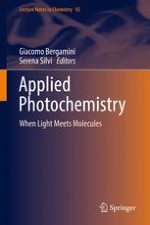2016 | OriginalPaper | Buchkapitel
11. Solar Filters: A Strategy of Photoprotection
verfasst von : Susana Encinas Perea
Erschienen in: Applied Photochemistry
Verlag: Springer International Publishing
Aktivieren Sie unsere intelligente Suche, um passende Fachinhalte oder Patente zu finden.
Wählen Sie Textabschnitte aus um mit Künstlicher Intelligenz passenden Patente zu finden. powered by
Markieren Sie Textabschnitte, um KI-gestützt weitere passende Inhalte zu finden. powered by
